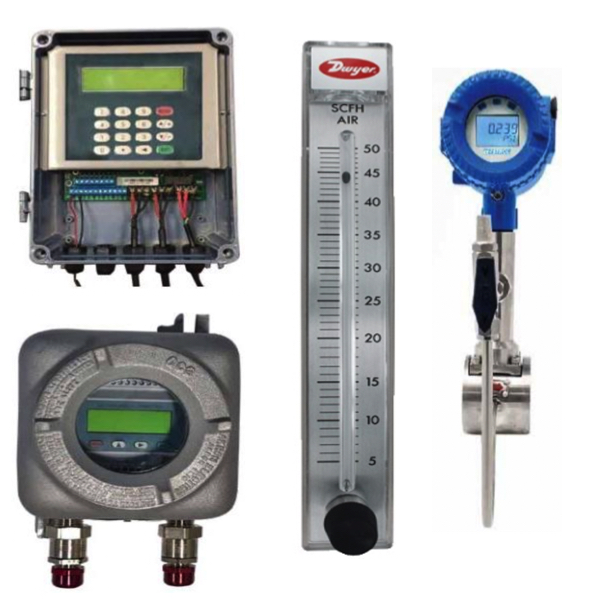Flow Meters

Devices vital for various industrial and commercial applications, flow meters serve to measure the flow of different kinds of media. For exceptionally accurate flow measurements across a wide variety of gases, liquids, and airs, many industries tend to prefer a differential-pressure flow meter. Though these devices can be quite complex, the basic construction of a differential-pressure flow meter is relatively simple. Pressurized fluid flows through a pipe that is constricted in some way (in this case, an orifice plate), creating a pressure differential between the upstream and downstream sides of the constriction. With a basic equation from fluid dynamics, this pressure differential can then be used to calculate the flow rate through the pipe.
Flow meters that measure mass are particularly well-suited for applications demanding accurate control of gas and liquid flows. Such applications are common in many industries, including chemical processing and process control operations. Mass flow meters are reliable—they provide continuous flow measurement without the need for moving parts, which means there's less to go wrong.
FAQs
What is a flow meter and how does it work?
A flow meter is a device used to measure the rate or quantity of liquid or gas moving through a pipe or system. Depending on the technology, flow meters work by measuring velocity, pressure difference, mass flow, or the physical movement of fluid across a sensing element. Accurate flow measurement is critical for process control, energy efficiency, product quality, and regulatory compliance in industrial, commercial, and municipal applications.
What are the different types of flow meters and how do I choose the right one?
Common flow meter types include magnetic, ultrasonic, turbine, positive displacement, Coriolis, vortex, and differential pressure flow meters. Choosing the right flow meter depends on several factors such as fluid type, flow range, pipe size, temperature, pressure, required accuracy, and installation environment. Selecting the correct technology ensures reliable performance, longer sensor life, and accurate measurement for your specific application.
What industries commonly use flow meters?
Flow meters are widely used in water and wastewater treatment, oil and gas, chemical processing, food and beverage production, pharmaceuticals, HVAC systems, power generation, and manufacturing. These industries rely on flow meters to maintain consistent processes, monitor consumption, ensure safety, and meet regulatory standards. Accurate flow measurement helps reduce waste, improve efficiency, and support predictive maintenance.
How accurate are flow meters and what affects their accuracy?
Flow meter accuracy varies by technology and application, with many industrial flow meters offering accuracy levels of ±0.1% to ±2% of reading. Factors that affect accuracy include fluid properties, installation conditions, straight pipe requirements, air or bubbles in the fluid, electrical noise, and calibration frequency. Proper installation, correct sizing, and regular calibration are essential to maintaining long-term measurement accuracy.
Do flow meters require calibration and maintenance?
Yes, most flow meters require periodic calibration and maintenance to ensure continued accuracy and reliable operation. Calibration intervals depend on the flow meter type, process conditions, and industry standards, but regular verification helps prevent drift and measurement errors. Proper maintenance extends equipment life, improves process reliability, and ensures data used for billing, compliance, or control remains trustworthy.

